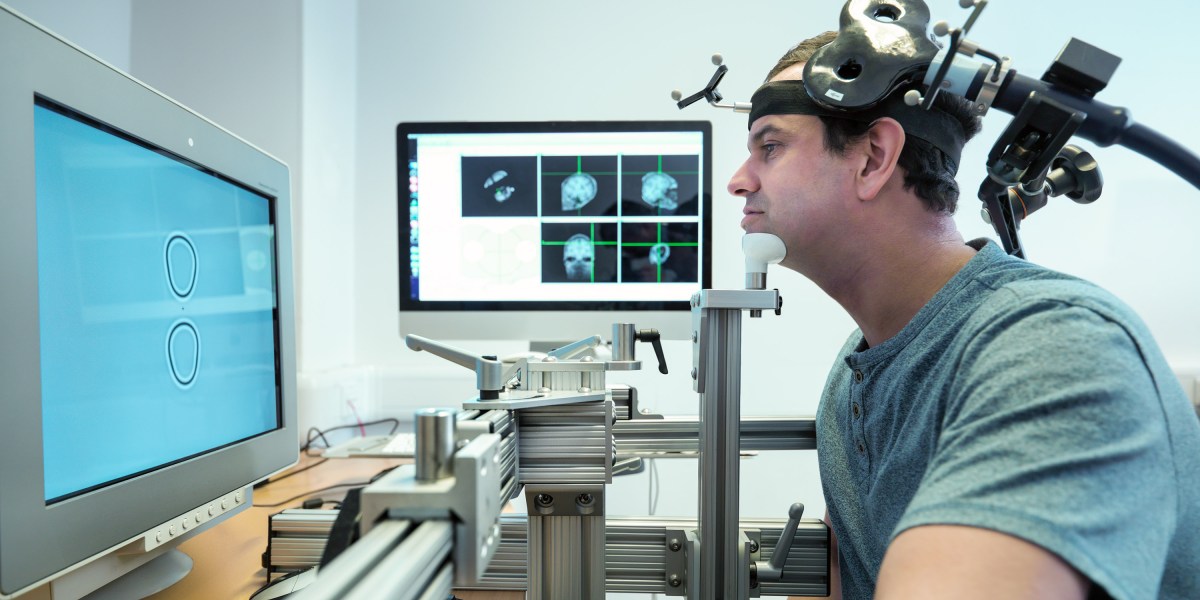
But is it? In Bluhm and colleagues’ survey, responses varied. Some thought treatments that involve multiple trips to the doctor’s office are invasive because they impinge on a person’s time. Others thought treatments that rely on devices are less invasive than traditional talking-based therapies, because they don’t require regaling a stranger with one’s life story. But others said that what made TMS invasive was its impact on the brain.
The effects can spread throughout the brain. In theory, noninvasive forms of brain stimulation are designed to target specific regions, such as those involved with mood. But it’s impossible to pinpoint tiny areas when you’re stimulating the brain through the skull, as Nick Davis at Manchester Metropolitan University points out.
And if TMS can help treat the symptoms of chronic pain, depression, or Parkinson’s disease, then it must be eliciting some sort of change in the brain. This might be in the way signaling molecules are produced, or the way brain circuits connect or fire, or perhaps some other mechanism.
And given that we still don’t really understand how TMS works, it’s difficult to know how, if at all, these changes might affect the brain in the long term.
Is a treatment invasive if it changes the way a person’s brain works? Perhaps it depends on the impact of those changes. We know that “noninvasive” forms of brain stimulation can cause headaches, twitches, and potentially seizures. Electroconvulsive therapy, which delivers a higher dose of electrical stimulation, is designed to trigger a seizure and can cause memory loss.
This can be extremely distressing for some people. After all, our memories make us who we are. And this gets at one of the other concerns about brain-modifying technologies—the potential to change our personalities. Doctors have noticed that some people who have DBS for Parkinson’s disease do experience temporary changes in their behavior. They might become more impulsive or more irritable, for example.
It’s unlikely that the effects of noninvasive stimulation will be anywhere near as dramatic as that. But where do we draw the line—what counts as “invasive”?
It is an important question. Treatments that are considered invasive are generally reserved for people who have no other options. They are seen as riskier. And treatments that are considered too invasive might not ever be used, or even researched, according to Nir Lipsman, a neurosurgeon based at the University of Toronto, and his colleagues.
